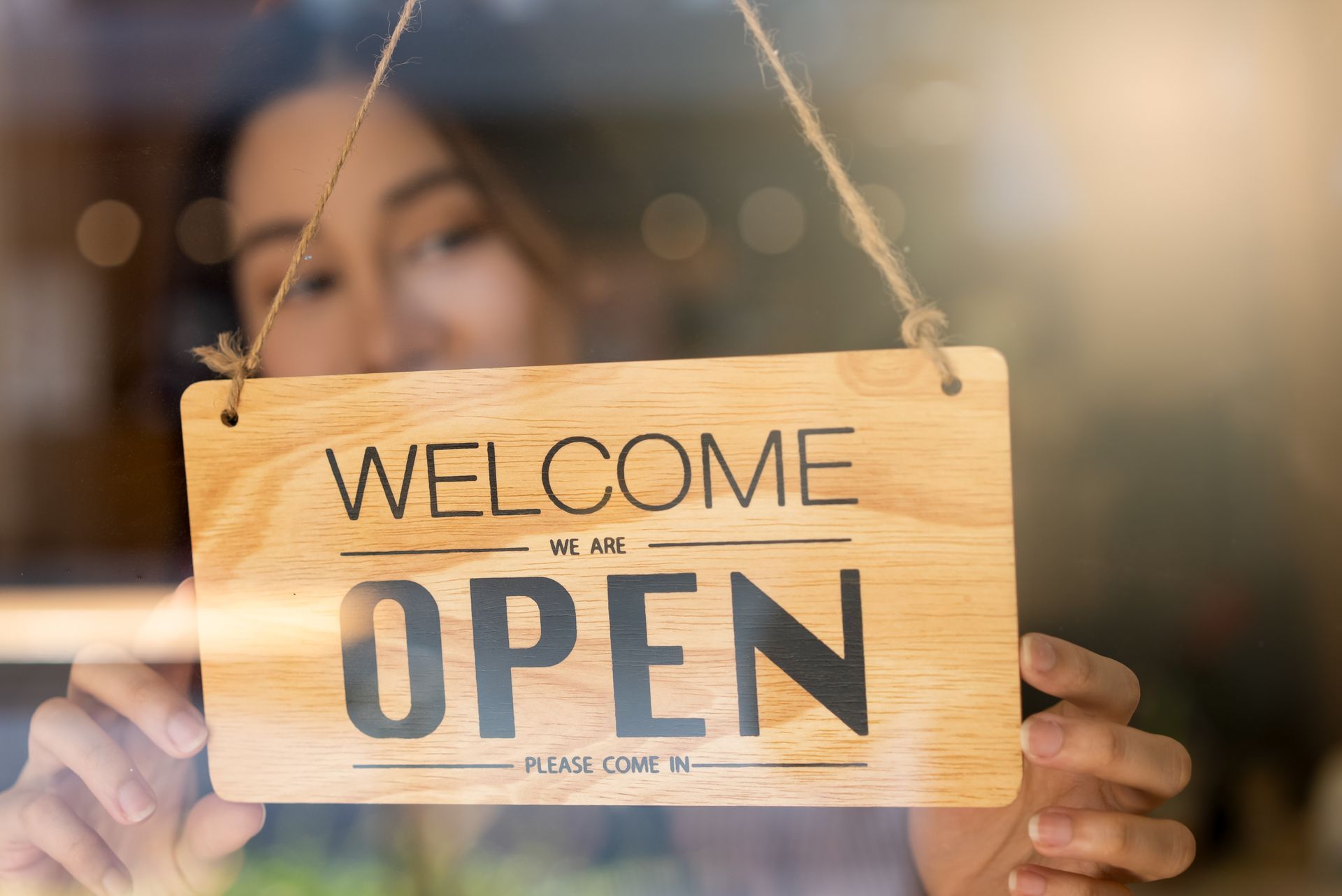Social Media Marketing for Local Businesses: Build a Strong Local Presence
Social media can, at times, feel overwhelming. Top platforms have billions of users who publish tons of social media posts every hour. It may seem like any content you would post would get lost in the shuffle, but that’s not the case. At least, not with a localized social media marketing strategy.
By specifically targeting local social media users, you can reach an audience that’s more likely to actually engage with your content and become real leads or customers for your business. Discover how to implement a successful local social media strategy, from choosing the right platforms to running paid social ads, in this guide.
Why is Social Media Important for Your Local Business?
It's likely that ideal customers from your area use social media. In fact, many of them are probably browsing their favorite platforms right now. By sharing social media posts tailored to that local audience, you can connect with customers and create leads for your business.
It’s a cost-effective marketing strategy for boosting brand awareness, building stronger community connections, and getting more people in the door. More than half of customers say they discover new businesses on social media. Building a social media presence for your business will help more people discover it and hopefully become new customers.
1. Prepare Your Strategy
The first step in social media marketing for local businesses is setting a strategy. Before you brainstorm any post ideas or film any content, think about what exactly you’re trying to achieve. Are you trying to primarily grow brand awareness? Increase leads? Strengthen brand loyalty?
Laying out specific goals will help your team get on the same page and stay on track with your social media management.
You should also clearly define your target audience. There are billions of social media users, but you’re not trying to connect with them all. At least, you shouldn’t be. The best use of social media for your local business is to focus on a specific group of customers who are the most likely to be interested in your services. Work on finding your target audience early so you can create the kind of content they want to see.
2. Choose Your Social Media Platforms
Deciding which social media platforms to use can make or break your marketing strategy. Think carefully about the platforms your target audience is most likely to use and which best align with the social media posts you want to publish.
This section should outline all the possible and recommended platforms. Provide in a bulleted list, followed by a brief description of what it's best used for in the context of a local business and target audience:
- Facebook: The most popular social media platform in the world, Facebook is ideal for running geotargeted ad campaigns and directing traffic to in-person businesses with a business Facebook page. You can also join local Facebook Groups and engage with other Facebook Business Pages from your area to boost your online presence.
- Instagram: Primarily a platform for visual content, Instagram makes it easy to create audience connections and reach local customers with geotags and local hashtags.
- TikTok: Consider sharing short video content on TikTok that answers common questions that local customers have, showcasing your services and results, or sharing behind-the-scenes insights that set you apart from the competition.
- YouTube: As a dedicated video platform, YouTube is a great platform for sharing short-form videos on relevant local topics or longer videos that highlight your expertise.
- Yelp: Although not exactly a social media platform, using Yelp allows you to attract local customers with relevant promotions, discounts, rewards, and check-ins.
- LinkedIn: As a platform for business professionals, LinkedIn may help you connect with local commercial clients. You can also use the site to join local groups, share your involvement in community events, and display your company information, like your business address.
- X (formerly Twitter): Ideal for sharing live local business updates like store hours, events, and flash deals.
- Reddit: A community discussion site that can help businesses reach local niche audiences to share insights, gather feedback, offer customer service, and build a deeper relationship with customers.
3. Create a Content Strategy and Calendar
Next, work on narrowing down your social media strategies and turning them into a content calendar. Your calendar outlines the type of content you plan to share and when to post. By planning out your content in advance, executing your content strategy will be much less stressful.
4. Use Posting Best Practices
Social media platforms all have their own algorithms and rules, so make sure to follow the guidelines about posting on the platforms you choose. In general, try to follow these posting best practices:
- Post regularly, aiming for two to three posts per week.
- Cover consistent themes that interest your target audience.
- Share a mix of new original content, curated content from other experts, and relevant user-generated content.
- Add an engaging caption to each post.
- Make the visual elements of your posts as compelling as possible to grab users’ attention.
5. Build Relationships With Engagement
Social media isn't one-sided. These platforms are designed for interactions, so don’t be afraid to be active beyond sharing your own posts. Respond to your audience’s comments, go to other users’ related posts and comment on them, and encourage your audience to get more involved. Engaging more with your audience will strengthen your relationships, making users more likely to become customers.
6. Promote Your Business
Businesses on social media have to walk the fine line between sharing too much direct promotion and not enough. A good guideline is to dedicate no more than 20% of your posts to promotional content. Use the remaining 80% of your posts to entertain, engage, or educate your target audience with knowledge-based content.
7. Take Advantage of Social Ads
Creating a social media page on most platforms is completely free. You gradually grow your audience organically by sharing content that is relevant and engaging to your target customers. The trade-off is that this kind of organic social media post takes time. If you’re willing to invest in paid social media marketing campaigns, you can get your business in front of your target audience much faster.
Social media platforms let you design campaigns to target specific users based on criteria like their location, age, gender, interests, and more. Once you launch your campaign, the platforms show your paid social posts to users who fit the criteria you set.
8. Monitor and Adjust
Social media platforms are constantly evolving. The most effective way to achieve your social media marketing goals is to consistently monitor your account performance and make adjustments as needed. Learn the types of content your audience likes best, what seems to perform well, and use those insights to create even better posts moving forward.
Tips for Your Localized Social Media Strategy
Getting started with local social media marketing can be tricky, but it’ll be much easier if you keep these key tips in mind:
- Brand Awareness and Consistency: Post several times per week consistently to grow and engage your audience.
- Captivate Your Audience: You only have a split second to capture and keep a social media user’s attention. Work on creating a compelling three-second hook for short-form video posts and a visual hook for static content.
- Content Quality: Focus on content quality over content volume. Good lighting, careful copy editing, and other small details make a big difference.
- Content Variety: Share a mix of content formats, such as video, photos, testimonials, behind-the-scenes, educational/informational posts, how-tos, and thought leadership.
- Local Hashtags: Add relevant local hashtags to your posts, like your town name or other nicknames for your area.
- User-Generated Content (UGC): Encourage your customers to leave reviews or share posts about your business.
- Promote Your Profile: Incentivize people to follow your social media accounts. Add your profile links wherever customers might look for them, like your website or email footer.
- Social Media SEO: Incorporate relevant keywords into your content and use other social media SEO strategies to boost the visibility of your posts.
Drive Local Presence With a Strong Social Media Strategy
Your local customers are out there—you just need to familiarize them with your business. A strong social media strategy is the perfect solution.
If you’re worried about managing social media alongside your other digital marketing strategies, try Optimize HQ, a social CRM. With it, Optimize Digital Marketing helps you manage all digital marketing strategies from one platform.
And if you want to devote your focus to running your business, choose social media management from Optimize Digital Marketing. Our experts will develop and execute an impactful social media strategy to grow your business.



